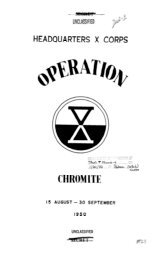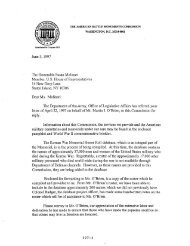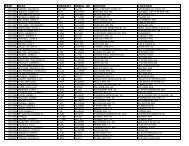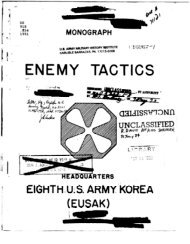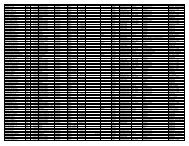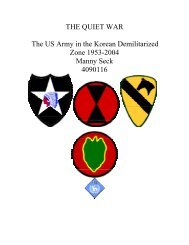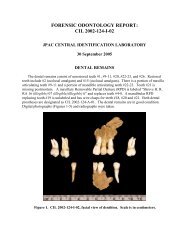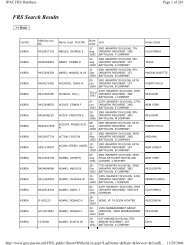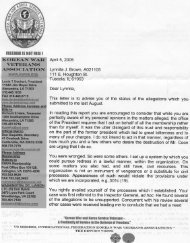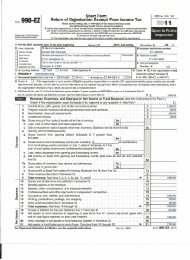FORENSIC ANTHROPOLOGY REPORT: - Korean War Educator
FORENSIC ANTHROPOLOGY REPORT: - Korean War Educator
FORENSIC ANTHROPOLOGY REPORT: - Korean War Educator
You also want an ePaper? Increase the reach of your titles
YUMPU automatically turns print PDFs into web optimized ePapers that Google loves.
Forensic Anthropology Report: CIL 2002-124-I-02<br />
RACE<br />
Indeterminate. Gross morphological observations and metric analyses were used to assess<br />
race. Only part of the skull, the cranial vault, was available for analysis. The presence of an<br />
inion hook, absence of wormian bones, and rugged muscle markings are common in caucasoids<br />
(Rhine 1990). Small brow ridges, elliptic external auditory meatus, and complex cranial sutures<br />
are common in mongoloids (Rhine 1990). The lack of more diagnostic cranial elements for the<br />
determination of ancestry and the distribution of observed features between caucasoids and<br />
mongoloids results in an indeterminate assessment.<br />
Six postcranial measurements were taken and evaluated against a discriminant model<br />
including White and Black male populations in FORDISC 2.0 (Ousley and Jantz 1996). The<br />
discriminant model produced a correct classification rate of 77.6% when applied to the reference<br />
sample of 210 individuals. The remains were classified by the model as a White male with a<br />
posterior probability of 0.774 and a typicality of 0.718. Determination of ancestry using<br />
postcranial remains is less reliable than that based on the cranium, and the analysis is further<br />
weakened given the paucity of postcranial remains. Only measurements from the humerus and<br />
calcaneus were available for metric analysis. Thus, an analysis of ancestry for this individual is<br />
indeterminate.<br />
STATURE<br />
65.5 to 71.7 inches. The total length of the right humerus (338 mm) was used to estimate<br />
stature using the White male model of Trotter and Gleser (1952), which was calculated using<br />
FORDISC 2.0 (Ousley and Jantz 1996). The White male equation was selected because it<br />
provides a more robust model due to the larger sample size. This model yields a point estimate<br />
of 68.6 inches with a 95% prediction interval of 65.5 to 71.7 inches.<br />
TRAUMA<br />
Perimortem trauma was identified though fracture angle, shape, edge color, and edge<br />
morphology (Galloway 1999; Ubelaker and Adams 1995). The left distal humerus exhibits a<br />
complete fracture that originates at the trochlea and terminates superior to the medial<br />
supracondylar crest (Figure 3). On the posterior aspect of the bone, the fracture follows the<br />
morphology of the olecranon fossa (Figure 4). On the anterior aspect, the fracture follows the<br />
morphology of the coronoid fossa. The fracture line aligns with the bone grain, which can be<br />
another indicator of perimortem trauma. The fracture edges are sharp and exhibit the same color<br />
patterns as the surrounding cortical bone. Overall morphology suggests that the fracture is a<br />
Type II or high medial condylar fracture (Galloway 1999). This fracture is most common in<br />
falls, but can be the result of a direct blow to the joint surface.<br />
Page 4 of 8




